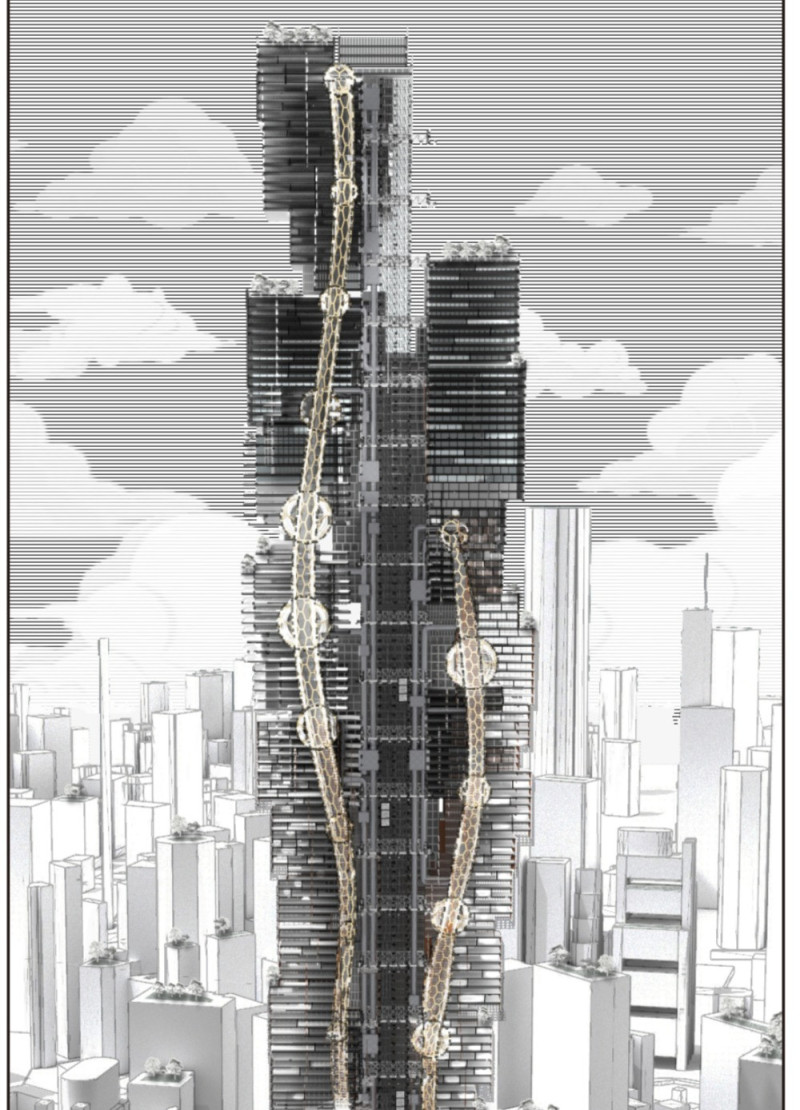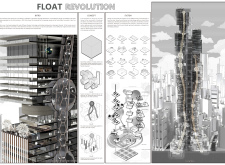5 key facts about this project
The project’s primary function is to facilitate mixed-use environments that incorporate residential units, commercial spaces, and recreational areas. This design aims to create a seamless transition between various activities while fostering a sense of community in a dense urban context. The building's layout is structured to optimize mobility, with multiple access points and pathways that enhance connectivity across different areas.
Dynamic Spatial Programming
One of the defining features of the Float Revolution project is its unique approach to spatial programming. The architect has developed a fluid network of pathways that allows for dynamic movement throughout the structure. Unlike traditional high-rise buildings characterized by rigid separation of uses, this design integrates residential, commercial, and recreational functions within a cohesive framework.
The incorporation of floating transport nodes facilitates vertical circulation without relying solely on elevators, promoting accessibility and user engagement. Each level offers distinct communal areas, ensuring that occupants can interact and share experiences regardless of their physical location in the building. This innovative circulation design encourages a culture of collaboration and adaptability.
Sustainable Materiality
Another noteworthy aspect of the Float Revolution project is its commitment to sustainable material usage. The building predominantly features glass, steel frameworks, composite panels, and green roof systems. Glass is utilized extensively to enhance transparency, allowing natural light to permeate interior spaces and providing visual connections to the exterior environment. The steel framework is instrumental in supporting the building's height while maintaining structural integrity.
Composite panels play a crucial role in the façade design, offering insulation and contributing to the overall energy efficiency of the building. Additionally, integrating green roof systems promotes biodiversity and mitigates heat absorption in the urban landscape. This material selection reflects a thorough consideration of both aesthetic and functional elements, underlining the project's commitment to sustainability.
The Float Revolution project stands out as an architectural design that harmonizes community interaction with modern urban living. For more detailed insights into this project, including architectural plans, sections, and designs, readers are encouraged to explore the comprehensive presentation of the Float Revolution.























